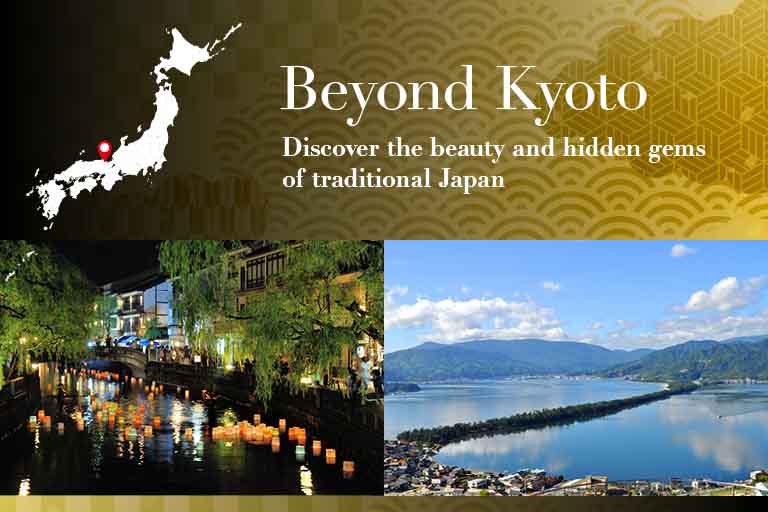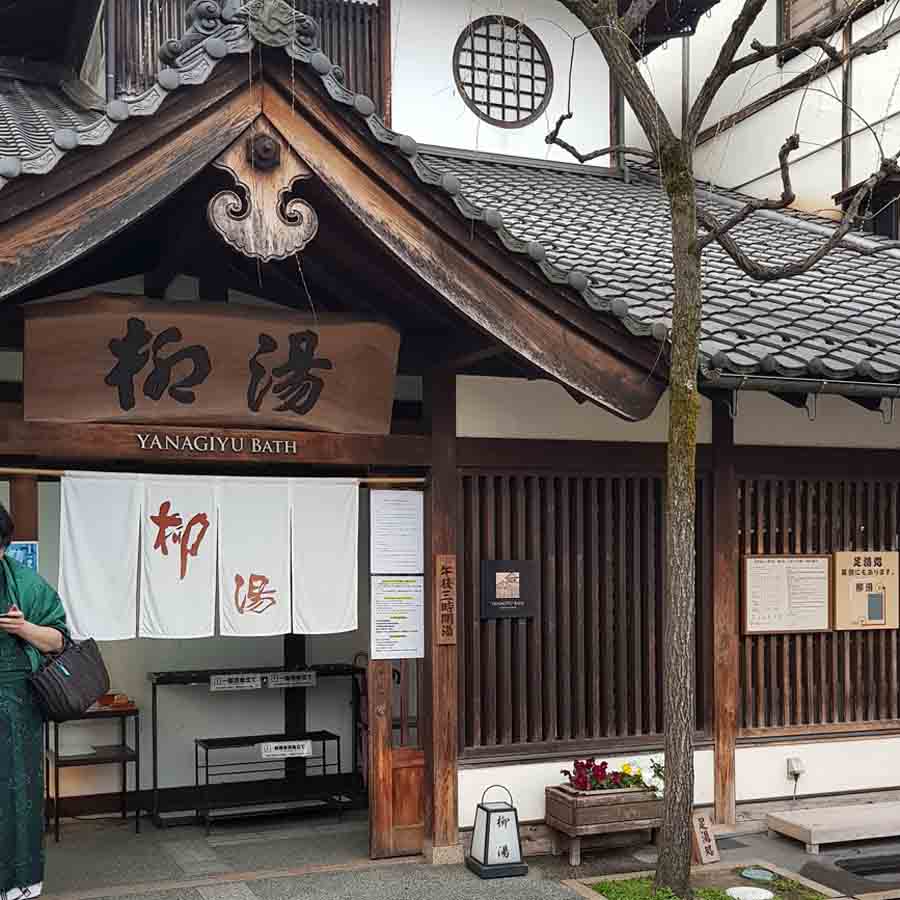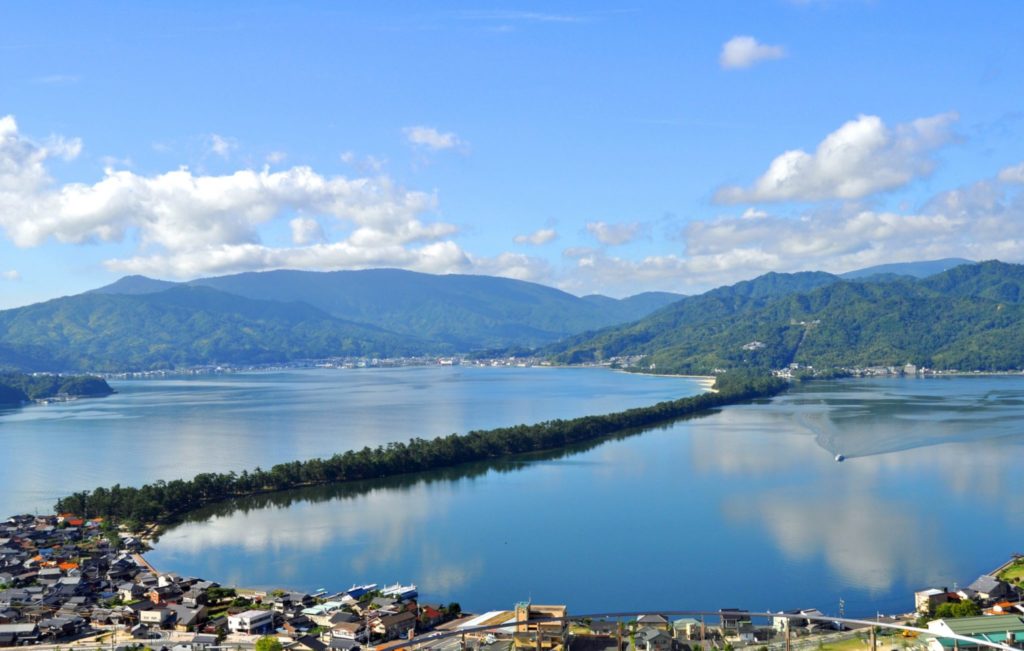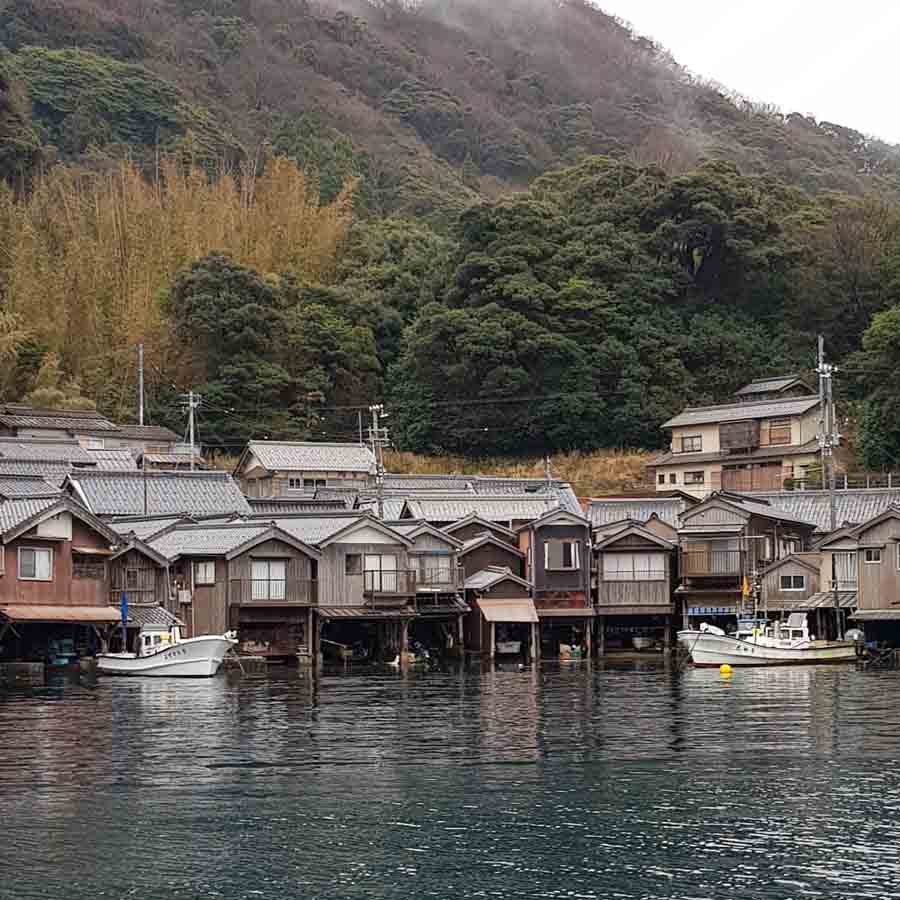Kansai is a region of Japan located in the middle of Honshu Island and includes iconic cities such as Kyoto and Osaka. Northern Kansai is the part of Kansai facing the Sea of Japan and its hinterland. Unlike its well-known counterparts, Northern Kansai is still largely untouched by mass tourism, full of authentic culture and natural beauty.
This blog will introduce you to some of the great spots and activities in the Northern Kansai Region of Japan.

Kinosaki Onsen
-Feel the nostalgia of old onsen town
Kinosaki Onsen has allured many famous Japanese artists and writers as well as locals for over 1,300 years. It is one of the most photogenic onsen towns in Japan with arched footbridges crisscrossing over the town’s gently-sloped river, providing the perfect backdrop for photos. The wonderfully-preserved architecture and authentic hot spring ambience can be seen and experienced along every street and alleyway. Listen to the rhythmic and calming clip-clopping of geta (traditional wooden sandals) as people stroll along the softly lit streets of Kinosaki Onsen.
Perhaps its biggest feature is town’s seven public bath houses. Each one has its own unique style and history. Most local ryokan include a ticket that gives you access to all seven for free with your stay.
It is also worth mentioning that all seven of the public bathhouses allow people with tattoos of any size, color, or shape.
Apart from trying one or more of the public bath houses, Journey to the East’s recommended activity while you are in Kinosaki Onsen is to visit Onsen-ji Temple. Onsen-ji Temple is the hot spring’s guardian temple. Visit the temple, as many have done before you, before entering these waters and receiving their healing powers. These hot spring waters are known for their healing abilities and this is where much of the town’s fame first came from. Onsen-ji Temple is located at the back of Kinosaki town midway up Mt. Daishi. You can climb the stone steps or take the ropeway gondola up to the temple.


Amanohashidate
-One of the top three scenic views of Japan
Amanohashidate is an iconic land bridge that straddles the Japanese Sea and Miyazu Bay. The land bridge itself has thousands of pine trees of all different varieties and beaches on both sides of the ‘bridge’ spanning 3.6K. Amanohashidate translates to “bridge to heaven” because it appears to be a pathway connecting heaven and earth when viewed from the mountains that rise above it on either side. The sandbar is quite thin—just 20 meters wide at its narrowest point. Most of it is occupied by pine trees. Amanohashidate is regarded as one of the top three most beautiful landscapes of Japan, along with Matsushima in Miyagi Prefecture and Miyajima in Hiroshima Prefecture.
You can walk or cycle on the sandbar, take a cruise across the bay, visit several lookouts and see historically significant temples and shrines. Amanohashidate hosts many unique and high-quality accommodation choices and is an ideal place to base while you explore Northern Kansai.

Ine fishing village
-UN Club of the Most Beautiful Bays of the World
The village of Ine is like nowhere else in the world, and that’s not hyperbole. The village is built on the waters of Ine Bay, and the 230 “funaya” (boat houses) that line the bay trace their origins back to the Edo period. While Japan historically had other towns built along the water like Ine, natural disasters such as typhoons have destroyed them. But Ine village is enveloped by mountains that separate it from the Japanese Sea and it remained safely nestled within a lush mountain-scape.
A symbol of Ine village is funaya. Traditionally used as boat house and provide extra storage/living space, now many of these historic buildings have been converted into Japanese inns and quaint cafes while still retaining their original designs.

Miyama village and surrounds
-Traditional farming and crafts
The hinterland area from the Sea of Japan still retains traditional farming villages and woodland. It is rich in traditional crafts such as kimono silk fabric, washi paper making and sword blacksmithing. For travelers to this area, there is the opportunity for farm stays where you can learn the traditional farming methods of Japan, hiking and cycling, and visiting studios of skilled craft people.
Miyama village is one of those villages. Unlike most of the other thatched roof houses found in Japan, most of Miyama’s 200 houses remain private residences. Some of the residents are craftspeople, skilled in such practical arts as basket making and roof thatching. Kayabuki-no- Sato is Miyama’s main village, made up of 39 houses, the largest concentration of thatched roof houses in Japan.

These areas are mostly accessed by trains. So, why not travel north, beyond the golden route and the major cities of Kansai such as Kyoto, Osaka and Nara, to discover the beauty and hidden treasures of traditional Japan.
For more information, visit Visit Northern Kansai. If you would like to have a private tour including these areas designed by experts, please visit our Private Tours page or Contact Us directly.